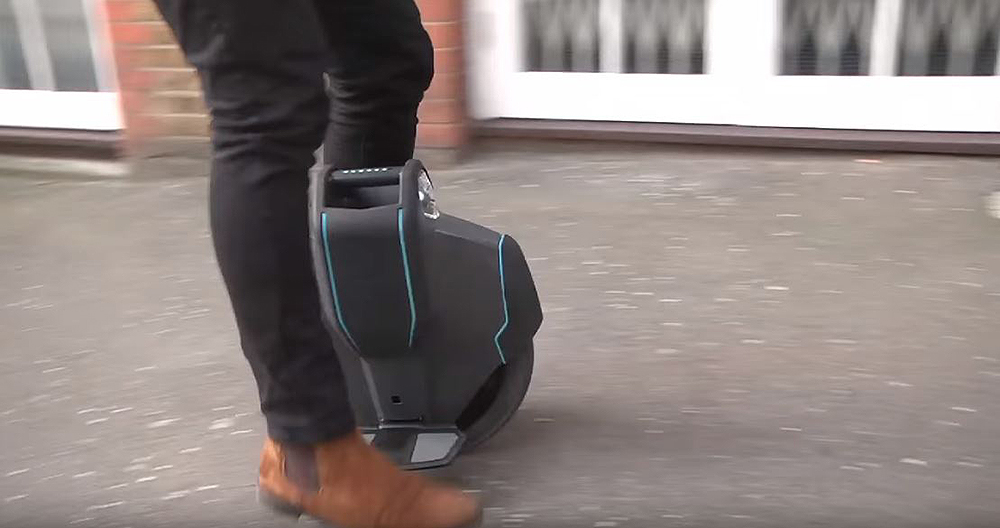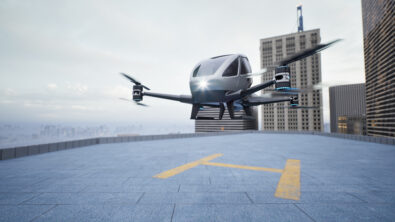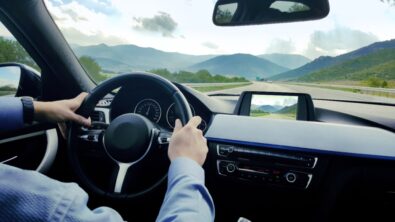Just do it – modes of transportation

There are a host of opportunities to provide creative transportation to the masses, from scooters to electric bikes to autonomous shuttles and a myriad of transport modes in between. However, are these alternative modes of transportation safe, should we require a license, a helmet or training; how will all these modes of transport meld together in a safe way?
I continue my conversation with Amitai Bin-Nun, vice president of Secure America’s Future Energy (SAFE), a nonpartisan, action-oriented organization that is committed to combating the economic and national security threat posed by America’s dependence on oil.
Here we explore what alternative modes of transportation the future might bring, and the regulations needed to keep us safe in this new transportation cocktail.
Ed: You can now rent electric scooters when you must go a few blocks and don’t want to have to walk. So, if you take this concept and make it a little bigger, add a seat or two, maybe a cover for bad weather, then you will have an exciting set of new transportation modes that could be very affordable and serve a diverse set of needs.
The problem with these small vehicles is that they might not be safe if you have big trucks on the road. So, regulating what kind of vehicles can operate together versus the benefits they bring is an issue.
Do you think it would be beneficial if you could get into a little one-person electric pod that could take you from point A to B, especially if it would be available on every street corner like the current electric scooters exist in some places?
Amitai: I love that you connected micro-mobility into this conversation. The way you stated it is correct. Scooters are not just compact fun vehicles, but indeed an early manifestation to the scenario that your car can be kept in your driveway because it’s not always the right vehicle for every trip you might want to take. The more we can decouple the vehicle you buy to the one you use on each trip, the more you can supply the right vehicle for the right trip you want to take. So it might be a scooter or a pod, or a more conventional vehicle to go to the mountains for skiing.
First, there are somewhat rigid restrictions around what designs you can experiment with for these types of vehicles. We have designed regulations for over 50 years around the driver, and that does not change overnight. At some point, we should talk about more experimentation in this space.
However, much has to be accomplished at the infrastructure and city management level to create the right space for this experiment. Examples of this regulatory space are either on the design side or the usage side, and most innovation is in the private sector. There is a need to establish a capital deployment to create a sustainable model for various vehicle types in multiple scenarios. The amazing thing about the scooter is people are now thinking about taking a trip that is not in a car or public transportation or walking. This is the first time in a very long time that new options have emerged.
 modes of transportationEd: Here in Cambridge Massachusetts, a company introduced electric scooters by dropping them off on corners, and people loved them. Then the city government got involved and said you need a permit to do that, so they pulled them off the road, and a second company (a legal one), came into the picture.
modes of transportationEd: Here in Cambridge Massachusetts, a company introduced electric scooters by dropping them off on corners, and people loved them. Then the city government got involved and said you need a permit to do that, so they pulled them off the road, and a second company (a legal one), came into the picture.
Many high-tech startups take the approach of “just do it” and ask forgiveness later. There are going to be all sorts of companies that want their vehicles out there, which might create a Wild West of transportation. Should the government stand back to some extent and see what happens, then step in only if it gets out of hand? Or, should they be more proactive with a heavier hand and step in well before something goes wrong?
Amitai: I think we see various reactions from some cities with these new transportation options.
In Santa Monica, California, they have embraced their role as scooter and bike deployment. However, New York has excluded them except for small areas on the outskirts of the city. Part of this is a reaction which is similar to the rollout of Uber and Lyft. It’s an understandable reaction.
I would like to see these transportation companies better articulate the benefits of these technologies for cities. Once they provide absolute value, it’s easier to deploy them, which I think will be a city-by-city scenario and not a one-size-fits-all situation.
Ed: Although the government stepped in and regulated scooters in Cambridge, the scooters did help with congestion, and they improved transportation convenience. Do you think it would help if cities were more aware of the benefits of these technologies?
Amitai: I think scooters especially, being about a year old – where you pick them up using an app, are very convenient. When introducing these scooters to cities, the positives and negatives are unknown. Therefore, a full appreciation of the technology is not present. Some of the negative narratives have won out in cities like New York.
My concern is sometimes regulations run ahead of the evidence to support them. Yes, there is much use of Uber and Lyft in New York City with much congestion, but some of the policies limit them with fees which are not the best policy when introducing new transportation methods. I would like to see a consideration of what assets the cities are trying to improve. Also, what kind of policies could benefit this solution? My concern is that they see new transportation methods as solely a problem, rather than a tool or solution to improve both transportation and equity in cities.
This concludes part five of a six-part series of my interview series with Amitai Bin-Nun. Stay tuned for the final excerpt of this discussion on future vehicles and governmental regulations.
About the author
Edward Bernardon is vice president of strategic automotive initiatives for the Specialized Engineering Software business segment of Siemens PLM Software, a business unit of the Siemens Industry Automation Division. Bernardon joined the company when Siemens acquired Vistagy, Inc. in December 2011. During his 17 year tenure with Vistagy, Bernardon assumed the roles of vice president of sales, and later business development for all specialized engineering software products. Prior to Vistagy, Bernardon directed the Automation and Design Technology Group at the Charles Stark Draper Laboratory, formerly the Massachusetts Institute of Technology (MIT) Instrumentation Laboratory, which developed new manufacturing processes, automated equipment and complementary design software tools. Bernardon received an engineering degree in mechanical engineering from Purdue University and later received an M.S. from the Massachusetts Institute of Technology and an MBA from Butler University. He also holds numerous patents in the area of automated manufacturing systems, robotics and laser technologies.


